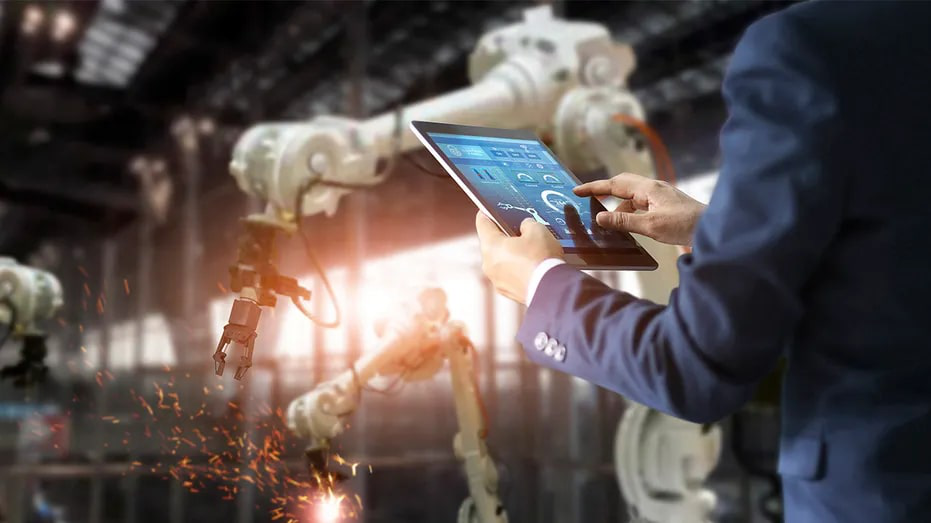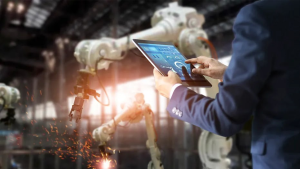Join Our Telegram channel to stay up to date on breaking news coverage
Goldman Sachs Inc., one of the industry-leading global investment firms, has reported that two-thirds of the United States of America’s jobs are prone to be exposed to artificial intelligence (AI) automation.
Over 300 Million Jobs Set to be Affected by the Spate of AI
According to a Goldman Sachs report detailed by Fox Business, the automation of the newest wave of generative artificial intelligence technology could affect up to one-quarter to one-half of jobs in the United States.
2/3 of American jobs may be exposed to AI automation, says Goldman Sachs https://t.co/vqw61mAXaq
— FOX Business (@FoxBusiness) April 18, 2023
The concept of AI is geared towards an advance and revolutionary technology that can simultaneously process data, audio, imagery, and texts in seconds.
These technologies stack up innovative tools like internet plugins, algorithms, and diverse networks to aid the smooth identification of existing data patterns and the regeneration of new content from sources.
In the report, Goldman Sachs economists Devesh Kodnani and Joseph Briggs emphasized the need for generative AI technologies.
However, they iterated that its output can be compared to human-created variations and its ability to simplify communication between humans and machines.
This reflects a more advanced potential for large macroeconomics to leverage.
These economists estimated that at least 18% of jobs globally could be computerized (automated), with the impact set to affect advanced economies such as the United States.
This is because office workers are seen to be more prone to risks than manual laborers.
Compared to AI’s insignificant effect on physically demanding occupations such as construction and repair, sectors like administration, writers, programmers, and lawyers are expected to be most affected.
A case study of ChatGPT was sighted in the report. Generative AI technology like the Chatbot can answer prompts, process research, solve mathematical questions, write essays, and proffer solutions to creative reasoning challenges.
This innovation has already created a dynamic structure of how many businesses rethink whether people should work daily.
The permeating trajectory of which AI is adopted and how advanced and versatile they appear have created variability in how it eventually affects the global economy regarding increased productivity, labor displacement, and re-employment of displaced labor.
Already, a new version of the Chatbot has been released (GPT-4), which has impressed users quickly due to its simplified approach to coding, website creation, essay writing, sketching, and equation solutions.
It was cited that most workers in the U.S. who are employed in occupations that deal with technological innovations like computers and machines will be exposed to automation.
This will significantly free up 25% to 50% of their workload and gear freed capacity towards output that propels productive results.
Goldman Sach economists expressed that these technology innovations that stand to displace workers had initially created employment growth in the long overhaul for decades.
Today, 60% of U.S. workers are employed in occupations that were non-existent in 1940.
However, 85% of employment growth in the last 80 years has been fast-paced, driving new technology advancements that have propelled the creation of new occupations.
The combination of labor cost savings, creation of new jobs, and productivity boost at the expense of displaced workers may be the ultimate price of AI’s massive adoption.
Although the impact of the U.S. labor market is estimated to be insignificant, productivity and global gross domestic product may skyrocket to 7% annually over ten years.
However, it remains to be proven that these reports may hold water. Several tech and AI enthusiasts iterated that the innovations of new AI concepts are geared towards simplifying humans’ workload.
That is, rather than replacing workers, skilled personnel can use these technologies to increase output and overall productivity.
Related News
- FOMO Builds as Ecoterra’s Recycle-2-Earn App Nears Presale Sell-Out – Over $1.6m Raised to Date
- Top Crypto Gainers Today, April 18 – RNDR, INJ, LHINU, DLANCE, AVAX, ECOTERRA, DYDX
- Coinbase CEO Brian Armstrong Considers Relocating Company from U.S. Amidst Regulatory Uncertainty?
Join Our Telegram channel to stay up to date on breaking news coverage


